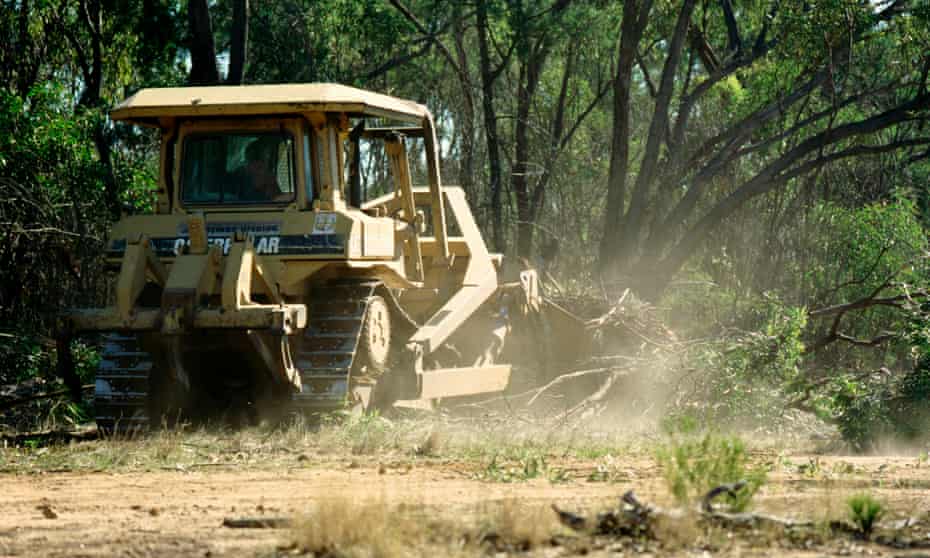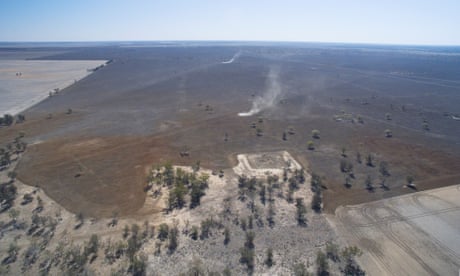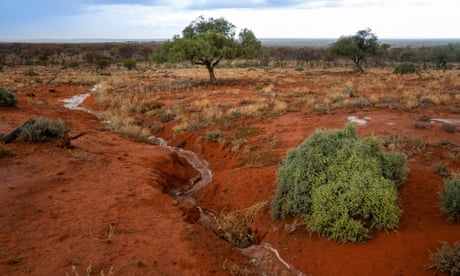Extract from The Guardian
Landholders in the state cleared 680,688 hectares of woody vegetation in 2018-19, primarily for beef.

The Statewide Landcover and Trees Study (Slats) for 2018-19 showed landholders cleared 680,688 hectares of woody vegetation, or about 0.7% of Queensland’s total.
Sign up to receive an email with the top stories from Guardian Australia every morning
Improved accuracy of remote sensing make precise comparisons with earlier years difficult. The government had said the 2017-18 clearing rate was 392,000 hectares.
The report said 3% was in ecosystems “identified as of concern”, while less than 1% of the clearing involved endangered ecological communities.
Stuart Blanch, a WWF Australia conservation scientist, said the figures were “a real shocker”, deliberately released ahead of New Year’s Eve to stir up the least attention. The data also suggests Australia’s carbon emissions are worse than reported, he said.
“It’s a carbon bomb for the Queensland and federal governments because it shows we are vastly underestimating carbon emissions from land clearing,” Blanch said. “That’s going to really jeopardise our net zero commitments and any 2030 abatement targets.
“We’re a massive land-clearing nation. Queensland has got the vast majority of it, and the vast majority of that is for beef.”
Guardian Australia sought comment from the Palaszczuk and Morrison governments.
In its 2021 projections update, the federal government predicted Australia’s carbon emissions in 2030 would be 30% below 2005 levels, beating the 26-28% reduction pledged at the 2015 Paris climate summit.

That estimate, though, included recent years when the land sector was deemed to have absorbed more carbon dioxide than it released. In 2019, for instance, the sector contributed a net negative 25m tonnes of CO2 equivalent, that report said.
Blanch, though, said Queensland’s new dataset, which assessed changes in vegetation down to 10 sq metre satellite imagery, were three times more accurate than that used to compile the National Greenhouse Gas Inventory figures.
In 2018, for instance, the federal government estimated 2018 national land clearing to be just under 370,000 hectares, well shy of the 680,000-plus hectares reported by Queensland alone in 2018-19.
As Guardian Australia reported last month, an analysis by Queensland researcher Martin Taylor showed earlier technology used to compile Slats was already detecting large areas of land clearing that was not picked up by the federal survey.
Glenn Walker, a senior campaigner for Greenpeace, said the Slats data was “extraordinary, horrifying figures” that showed Australia remained one of the world’s fastest deforesting nations.
“Behind these figures are millions of killed and maimed native animals like koalas and huge amounts of carbon emissions from burning and rotting trees,” Walker said.
“Clearly the current laws aren’t working and the beef sector isn’t taking this issue seriously. This should be a huge wake-up call to act fast before we lose more precious bushland and wildlife.”
The new data also indicate changes by Queensland Labor to tighten land-clearing regulations eased by the former Liberal National government under Campbell Newman were failing, Blanch said.
Areas deemed to be so-called “category X” that remain excluded from the 1999 Vegetation Management Act accounted for just over 70% of the total cleared area, the government said.
Costly efforts to reduce the amount of silt washing into the Great Barrier Reef region also appear to be undermined by the land clearing.

About one-third of the 2018-19 deforestation, or 217,419 hectares, occurred in catchments flowing into the reef region. About 85% of that clearing remains exempt from the law changes introduced by Labor in 2018 as category X, Blanch said.
The report also showed remnant clearing increased by 58% in the important Brigalow Belt in 2018-19 from the previous year to 35,550 hectares.
“The Brigalow Belt supports the highest bird diversity of any bioregion in Australia and is home to at least three species of reptiles that do not occur anywhere else in the world,” Blanch said. “So the spike in clearing here is particularly heartbreaking.
“It’s very disappointing the Queensland government sat on this data. They knew it was bad news and they buried it.”
The deputy premier, Steven Miles, said on Thursday a group of scientific experts would be assembled in early 2022 to better understand the study results and find ways to help avoid clearing or whether other measures were needed.
No comments:
Post a Comment